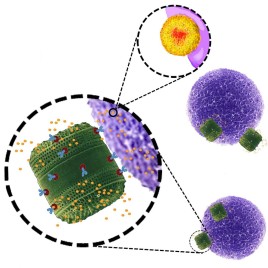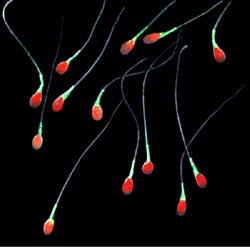Creating supervised injection facilities in Toronto and Ottawa would be a cost-effective way to prevent people from developing hepatitis C, according to an updated analysis. The researchers believe there is an 86 per cent chance one or more supervised injection facilities would be cost-effective in Toronto, and a 90 per cent chance in Ottawa. They […]
The backwards effects of warming
Manipulating the food-web to reduce carbon-dioxide emissions may have the opposite effect under a warmer climate, according to a new study. Under certain conditions increasing water temperatures can cause what are called ‘trophic cascades’ – These occur when a population increase or decrease in a one species impacts other species in the food-chain, by making […]
Using Statistics Canada information to reveal opioid trends
Researchers believe they have found a way to use Statistics Canada data to accurately estimate rates of opioid-related deaths nation-wide. The algorithm they developed may be useful for provincial and federal public health agencies, helping to quickly identify and report on trends in opioid overdoses across Canada. Original research paper published in the CMAJ on November 30, 2015. […]
Pregnant smokers quit…if the money is right
Pregnant women are more likely to quit smoking when they are offered a financial incentive according to a new study. The researchers found the financial incentive was cost-effective for the National Health Service in the United Kingdom, which determines cost-effectiveness in a similar method to other high-income countries. In a randomized controlled trial the researchers […]
The science of social media
A group of researchers is calling for further research into social media. The authors suggest that using social media as a proxy for real-world behaviours could help provide insights into an individual’s emotional state or personality traits, as well as being used to measure social conformity. Original research paper published in Trends in Cognitive Sciences on November […]

Fighting cancer with algae
A microscopic algae, called diatoms, have been genetically altered to target and deliver drugs to cancerous cells without harming healthy tissue. Researchers used a two-step strategy to attach antibodies as well as drug molecules to the algae, creating a targeted delivery system. The authors of the paper say the efficacy of the system, as well […]
Repairing DNA in a matter of weeks
Reprogramming and genetically correcting stem cells can be achieved in as little as two weeks thanks to a new technique. This advance could offer potential therapies for individuals with a range of genetic disorders. Previous techniques to create stem cells from a patient’s tissue and reprogram the stem cell to remove a negative mutation took […]

Ancient farming bee-haviour
Researchers have found evidence that humans have been gathering bee products, such as honey and honeycomb, for at least 9,000 years. The researchers examined residues preserved on thousands of pottery vessels from across Europe, North Africa, and Asia. The earliest evidence was found in pots from Neolithic sites in Anatolia, where Europe and Asia join, […]

Human sperm are surface swimmers
Human sperm are able to swim faster and straighter when they are close to a surface by adopting a unique ‘slither’ according to new research. The research team believes this slither may have adapted to the confined space in the reproductive system. Researchers filmed human sperm swimming within a micron of a glass surface and […]

Proving paleontology wrong
Researchers have found what they believe is definitive evidence that brains do fossilize. In 2012 Nicholas Strausfeld co-authored the first ever report of a fossilized brain in an edition of Nature, however the findings were widely doubted as only one sample was found. Strausfeld and his team have now found seven fossil of the same […]
As tough as tendons on bone: The new hydrogel
Researchers have developed a hydrogel which is more than 90 per cent water and able to adhere to slippery surfaces with the strength of tendon adhering to bone. They believe the gel will be ideal for protective coatings on underwater surfaces, such as boats, oil rigs, and submarines. The hydrogel is able to stick to glass, silicon, […]

The dangers of prescription painkillers for women
Women suffering from opioid addiction are more likely to become addicted from doctor-prescribed painkillers, such as OxyContin and codeine, than men according to a new study. Researchers believe more studies examining the development and effects of opioid addiction in women are needed to provide better treatment options. The study of 503 patients attending methadone […]
Research is too conservative
A pair of papers calls for researchers to take greater risks when choosing research problems to study in order to speed up scientific discovery and innovation. The two papers, one from PNAS and another from the American Sociological Review, used computer models to analyze millions of research papers. The study published by PNAS found that […]
Eating two homemade meals a day cuts diabetes risk
Eating two homemade meals per day lowers the risk of developing type 2 diabetes according to recent research from the American Heart Association. Researchers found that individuals who ate a homemade lunch and dinner everyday had a 13 per cent lower risk when compared to individuals who ate fewer than six homemade meals each week. […]

Measuring antimatter: How antiprotons interact
For the first time researchers have measured the interaction between two antiprotons, a subatomic particle with the same mass as a proton, but with a negative electrical charge and the antimatter equivalent of the proton. The measurement shows the interaction between antiprotons is attractive, similar to how two magnets can be attracted to each other. […]

Male songbirds aren’t colourful, females are just drab
The colour differences seen in the plumage of male and female songbirds is mostly from to the effects of sexual selection upon the female, not the male, according to a new analysis. This challenges the long-held view that males developed more colourful plumage because of sexual selection. Researchers quantified the colouration of nearly 6,000 species […]
